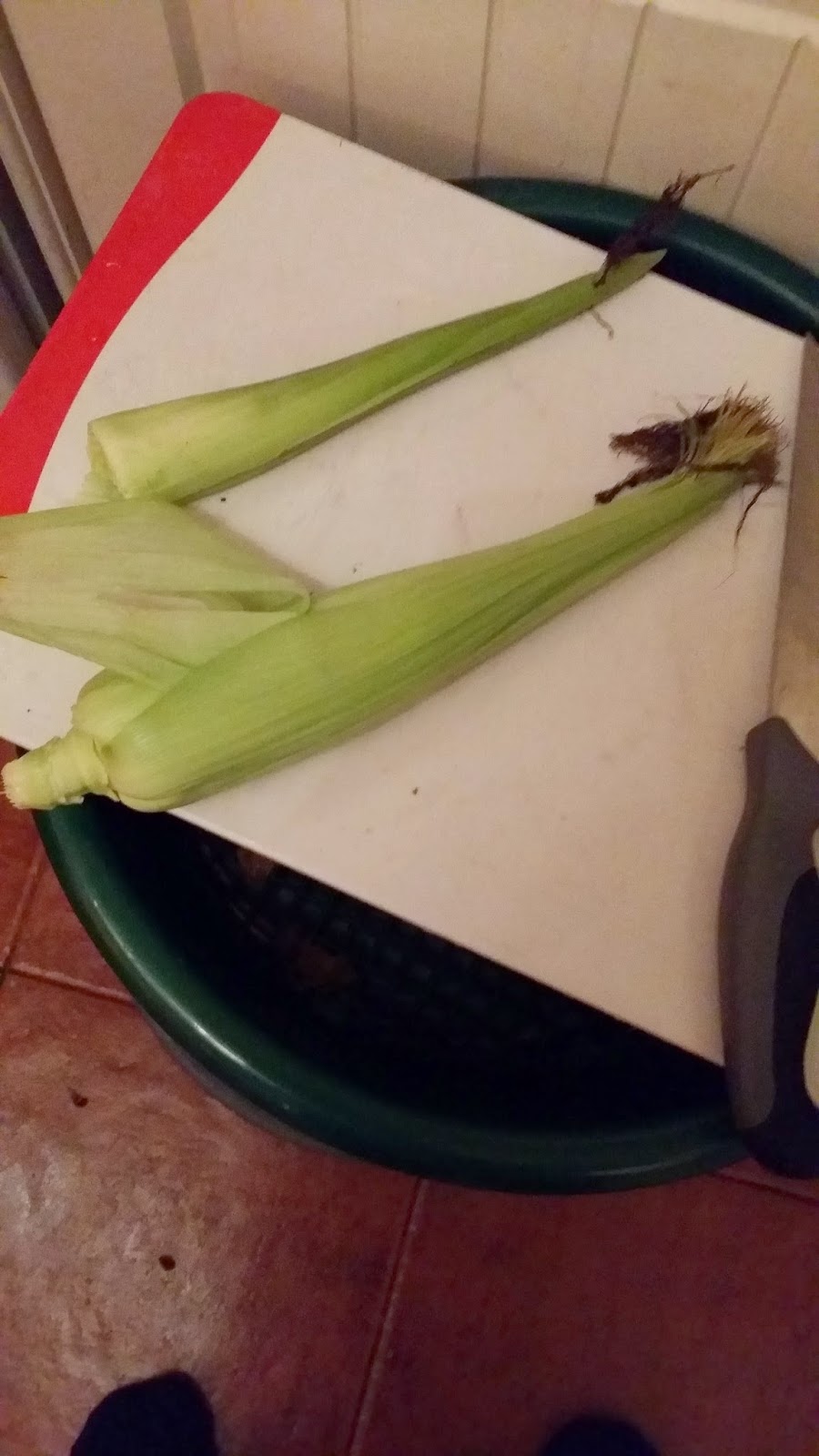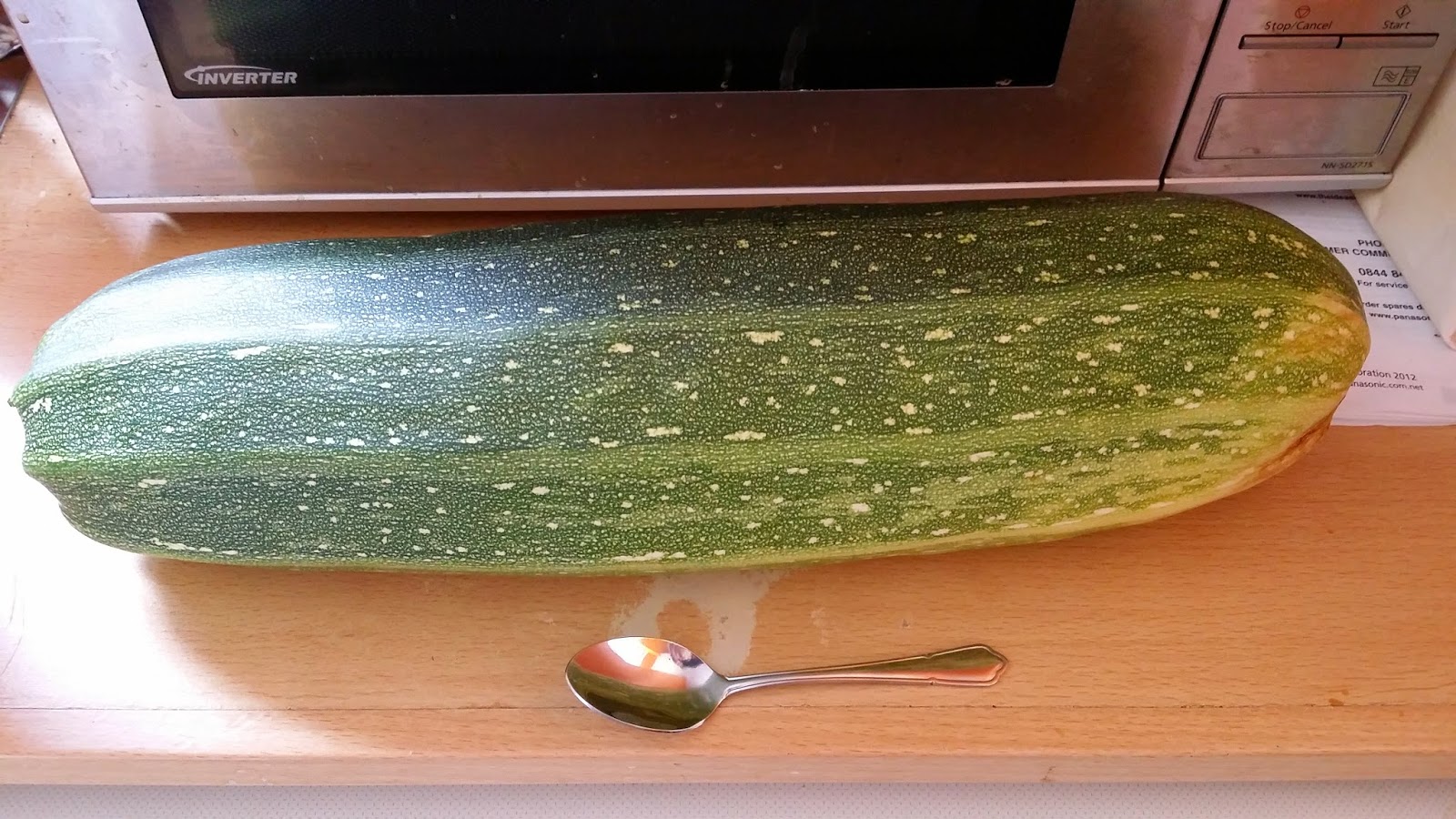It's possible that I'm more excited about this than is rational, but I think these are awesome. They're a variety called Salad Blue , which were bred in about 1900 as a Victorian novelty. Despite the name, they're not a salad potato in the slightest: they're a maincrop rather than an early, all but the smallest have to be peeled to be edible, and they fall apart if they're cubed and boiled. And they're not blue. Apart from that, great naming work Victorian gardeners!
, which were bred in about 1900 as a Victorian novelty. Despite the name, they're not a salad potato in the slightest: they're a maincrop rather than an early, all but the smallest have to be peeled to be edible, and they fall apart if they're cubed and boiled. And they're not blue. Apart from that, great naming work Victorian gardeners!
Leaving aside the excitement of "Holy crap, purple!", the allure of purple potatoes is that they are in theory healthier. The purple colour comes from anthocyanins which research shows to have an unproven correlation with improved health and neural development (or as the Mail no doubt put it, "NEW RESEARCH SAYS POTATOES CURE CANCER"). However in terms of the taste, I wasn't blown away. They were very bland, which is weird considering you expect brighter coloured things to taste stronger.
I'm torn as to whether I'll be planting them again next year. On the one hand, purple, which is very important. They also appear to've been very prolific croppers - I've not even harvested a full potato bag yet and I've got three and a half meals out of them. And perhaps the taste issue was just this one bag and they'll improve. We'll see.
The plate of purplish chips (not as impressive once cooked. The mash that I made the next day was a bit more grey than purple too. Maybe I'll just boil them next time. Or add some food colouring) aside, there's two more interesting things about that plate. Three if you count the sous-vide perfect steaks.
The first is the end of the beans-rush. The torrent stopped as abruptly as it began; all of a sudden there were just no more beans, like someone turned off a tap. The plants are still green and still trying to grow outwards, but it looks like they're pretty much done with providing me food, bar a couple of stragglers. It's a bit of a shame actually - I spent so much effort making sure that we would eat all of the beans that I think we actually succeeded in eating all of the beans. Practically none have been frozen for the winter, so I hope we don't find a recipe that urgently requires them!
Secondly is a brand new adventure for this year's growing - corn! This came from my Three Sisters experiment, which has so far held up its end of the bargain on two out of the three vegetables. I'm not usually a lover, or even a liker, of sweetcorn, but I was told that freshly picked is a completely different flavour to canned supermarket toot and it was interesting so I thought I'd give it a go.
Corn is viable to eat when the top tassels turn a chocolate brown, but it's impossible to tell from the outside if you've got anything or not as the actual eaty bit is concealed inside the green bits. So I harvested a few likely looking husks and carried them into my wife, who was declared expert on the grounds that I didn't know what I was doing and she didn't say "Not it" quickly enough. Plus, she's admitted to liking shop-bought corn before - that's plenty expert enough for me and frankly she should know better by now.
The husks felt light and I wasn't a hundred percent convinced that there was actually going to be anything inside. I thought we were going to peel away layer after layer of husk like an organic pass-the-parcel before discovering that nothing had actually grown. Imagine my surprise to find that we ended up with something that looked like you see on television!
Before...
And after - wait, did I make that? That looks like real food! My wife used to do magic; I wouldn't put it past her capabilities to sneak in some professionally-grown corn and switch it out with some legerdemain to save my feelings. Thanks sweetie!
The corn was wrapped in aluminium foil with pepper and melted butter and oven cooked for about 10 minutes to my wife's expert instructions.
The results? Interesting more than delicious. It was very sweet and the taste was a concentration of all of those times I've eaten sweetcorn in the past and thought, "This is okay actually," without any of the bitter disappointment, aftertaste or horrible texture that ruins that thought a milisecond later. Fresh really does make a massive difference - it removes all of the nasty bits of the taste from it.
However, with all the nasty bits gone, I was left with a taste that was just okay without ever blowing my mind. It was nice enough, and I'll eat the rest of the crop this year with pleasure, but I'm not sure if I'll grow it again next year, especially given how much of a pain in the arse it was to get viable plants going without dying or being devoured. Not to mention the money I spent on constantly rebuying seedlings. Plus, since the whole point of it is that it tastes different and nice when fresh, there's very little point in trying to store it, which leave me in the situation I am now - there's two husks ready to go, but I don't fancy it right now.
It will entirely depend on if I have a spare bed in the garden once everything else is planned out, rather than being something which I will actively make space for.
PJW






















